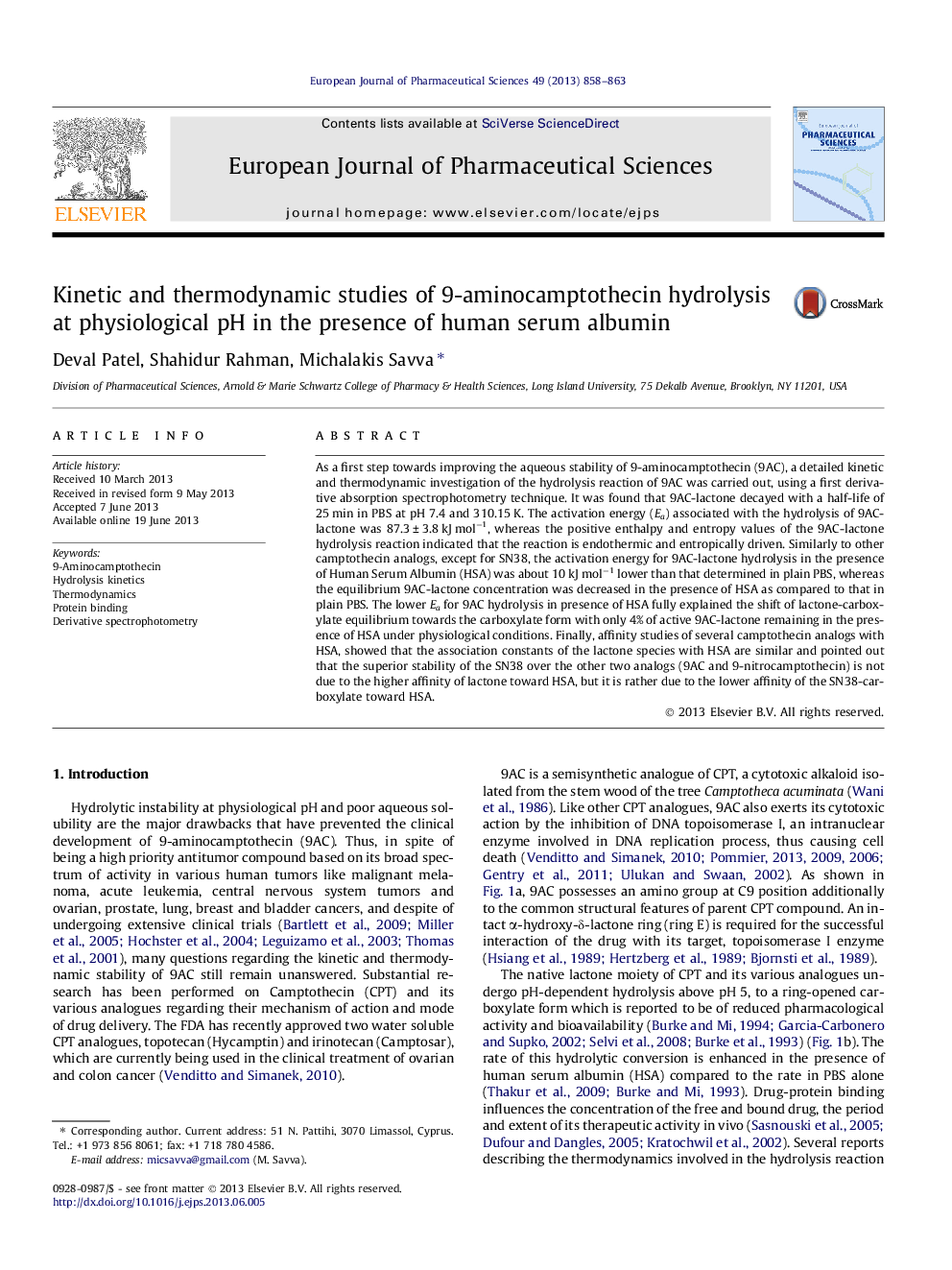| Article ID | Journal | Published Year | Pages | File Type |
|---|---|---|---|---|
| 2480753 | European Journal of Pharmaceutical Sciences | 2013 | 6 Pages |
As a first step towards improving the aqueous stability of 9-aminocamptothecin (9AC), a detailed kinetic and thermodynamic investigation of the hydrolysis reaction of 9AC was carried out, using a first derivative absorption spectrophotometry technique. It was found that 9AC-lactone decayed with a half-life of 25 min in PBS at pH 7.4 and 310.15 K. The activation energy (Ea) associated with the hydrolysis of 9AC-lactone was 87.3 ± 3.8 kJ mol−1, whereas the positive enthalpy and entropy values of the 9AC-lactone hydrolysis reaction indicated that the reaction is endothermic and entropically driven. Similarly to other camptothecin analogs, except for SN38, the activation energy for 9AC-lactone hydrolysis in the presence of Human Serum Albumin (HSA) was about 10 kJ mol−1 lower than that determined in plain PBS, whereas the equilibrium 9AC-lactone concentration was decreased in the presence of HSA as compared to that in plain PBS. The lower Ea for 9AC hydrolysis in presence of HSA fully explained the shift of lactone-carboxylate equilibrium towards the carboxylate form with only 4% of active 9AC-lactone remaining in the presence of HSA under physiological conditions. Finally, affinity studies of several camptothecin analogs with HSA, showed that the association constants of the lactone species with HSA are similar and pointed out that the superior stability of the SN38 over the other two analogs (9AC and 9-nitrocamptothecin) is not due to the higher affinity of lactone toward HSA, but it is rather due to the lower affinity of the SN38-carboxylate toward HSA.
Graphical abstractFigure optionsDownload full-size imageDownload high-quality image (281 K)Download as PowerPoint slide
